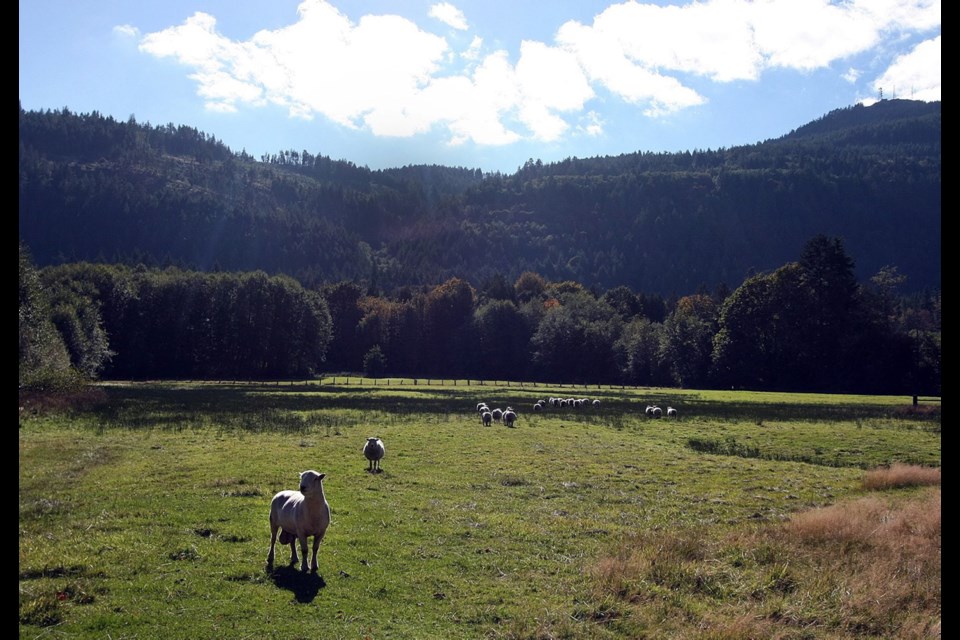Bucolic Salt Spring Island boasts a lot of sheep, artisans, well-aged hippies and world-class waterfront. But as the largest population centre of the Gulf Islands, the question of whether residents should shuck their rural status and incorporate as a municipality is firmly on the front burner.
A referendum on the issue is possible as soon as the new year.
A 141-page transition plan just passed by the Islands Trust council notes that Salt Spring’s 10,000 permanent residents and 3,000 non-resident property owners might have concerns about the “value for service” they’re getting and the number of sources tapped to provide services from water to police.
“So many decisions are made elsewhere that it’s ridiculous,” said incorporation advocate Ken Marr, owner of the island’s Windsor Plywood outlet.
A resident since 1969, he cites frustration with the duplication of effort required to get things done, with a building permit for a house requiring several separate stops. And don’t get him started on the runaround to get the hole at the bottom of Ganges Road repaired.
Road maintenance and policing come via the province, which also pays for the RCMP, sewer and recreational services come via the Capital Regional District, water from several sources, and land-use planning and development management from the Islands Trust. The 26-member Islands Trust was formed more than 40 years ago to deal with the threat of inappropriate or over-development given most of the land is privately owned.
A municipal system would include a mayor and six councillors, with two of the councillors continuing on the trust board and one continuing at the CRD, said Mark Aston, chairman of the citizen-led incorporation study committee. The nine-member committee was appointed in June 2015 and its study is funded by about $250,000 from the province.
The incorporation study suggests that with a municipal structure, taxes for a $470,000 home on Salt Spring would rise $15 per year; business taxes would fall $785.
For the trust as a whole, incorporation of Salt Spring would result in a budget shortfall estimated at $540,000 on a 2015-16 budget of $7.1 million.
Salt Spring property taxes account for one-third of the Gulf Islands’ total, and under a municipal system, a council could allocate the tax revenue to any services, as required. The current governance model generally restricts tax revenues to the services for which they are collected.
If Salt Spring incorporated, planning and services for the rest of the Gulf Islands could face “significant” changes, approaching “the maximum that could be absorbed by the organization in order to remain effective,” said a transition plan recently accepted by the Islands Trust council.
“It’s a delicate issue,” said trust council chairman Peter Luckham. Islands Trust did not request the provincially funded incorporation study, is not involved in the incorporation process and has not taken a position for or against incorporation.
Most sa���ʴ�ý population centres as large as Salt Spring have municipal status; even tiny Bowen Island voted for incorporation in 1999. Salt Spring remains the largest unincorporated community in sa���ʴ�ý, according to the island’s Chamber of Commerce.
A referendum depends on whether Community, Sport and Cultural Development Minister Peter Fassbender gives the thumbs-up. And that’s only if a citizen-led study committee determines by Nov. 30 that Salt Spring residents have enough information to make the choice. Fassbender sent a letter Sept. 20 outlining sa���ʴ�ý’s offer of restructuring assistance to the incorporation study committee, committing $19 million to incorporation issues, including almost $12 million in maintenance and road rehabilitation for the first five years.
Temporary assistance won’t be much help if Salt Spring had to foot the bill in future if roadways are affected by rising sea levels, said Peter Lamb, a former trust director (2005-08) who is not keen on incorporation. If the island incorporates, the new municipality would be responsible for all public roads, including planning, construction and maintenance now covered by the province.
“It’s certainly appropriate that we put it to the residents,” said Lamb, who wrote a book called The Islands Trust Story. “The thing that concerns me is that it’s not a reversible vote. Once we incorporate, there really is no going back.”
Land-use planning that is now the sole responsibility of the Islands Trust would essentially transfer to a municipal council with limited oversight by the trust and a right to appeal to the sa���ʴ�ý community minister if the trust rejects a council bylaw affecting land use, Lamb said.
Open houses on incorporation are slated for Nov. 7, 8 and 20, with the incorporation study committee not taking a yes or no stance.
“We’ve communicated a lot with the community,” Aston said. “It’s up to individuals and what they value mostly and if there is a vote, they’ll vote accordingly.
Major services provided by the CRD that would transfer to a municipal council include community transit, parks and recreation, public library, building inspection, economic development, community sewer systems and some community water districts, Lamb said.
Lamb said residents need a “much better understanding” of how the current system tamps down over-development by separating land-use planning from service delivery. “I think it’s done an excellent job for the last 40 years in preserving and protecting all the islands, not just Salt Spring.”
Marr said that Salt Spring’s population is committed to an environmental way of doing things, so he doesn’t fear over-development if a mayor and council make the decisions.
“They can pass all sorts of restrictive bylaws,” he said. He points to Metchosin, which incorporated in 1984 to stave off development, not embrace it.
“We incorporated for the purpose of keeping Metchosin as a rural community,” Mayor John Ranns reiterated to the sa���ʴ�ý in September.



